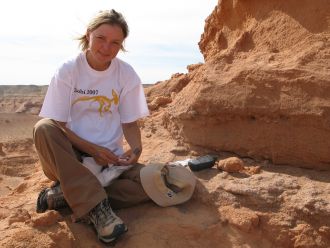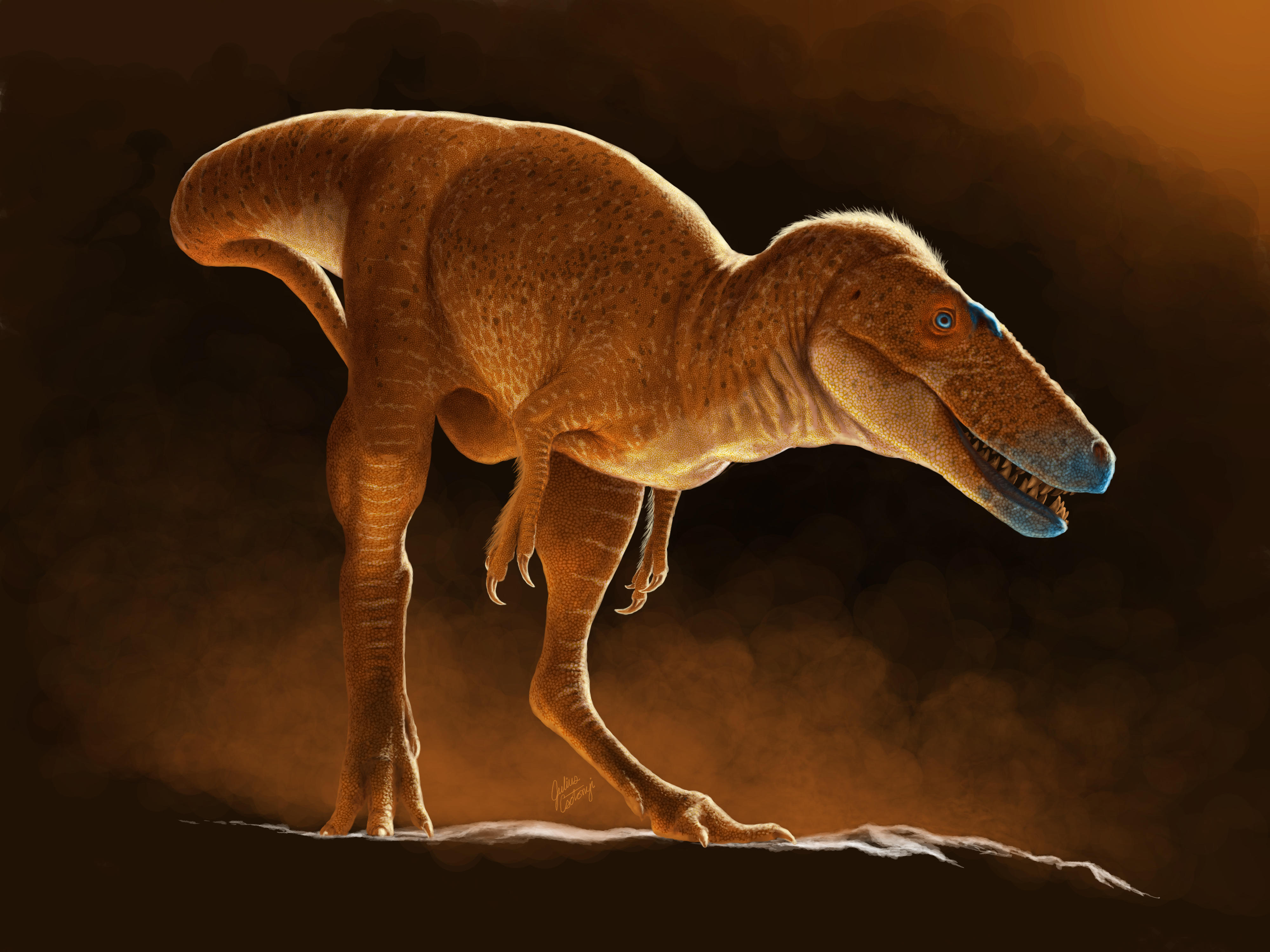Media release
From:
Palaeontology: A new tyrannosauroid dinosaur from Mongolia
The discovery of a new species of tyrannosauroid — the group of dinosaurs that includes Tyrannosaurus rex — is reported in Nature. This discovery sheds new light on the evolution of wider tyrannosaur species and their dispersal patterns in the late Cretaceous period.
The Eutyrannosaurians (which included Tyrannosaurus rex) were a group of large predatory dinosaurs that dominated the Asian and North American landscape until approximately 66 million years ago. These apex predators are thought to have arisen from smaller-bodied tyrannosauroids; however, there is little fossil evidence to corroborate this idea.
Two partial tyrannosauroid skeletons discovered in Mongolia in 1972–1973 were re-examined by Jared Voris, Darla Zelenitsky and colleagues, who assign them to a new tyrannosauroid species and genus named Khankhuuluu mongoliensis. Phylogenetic analysis of the skeletons suggests that the new species is an immediate relative of the Eutyrannosauria and a close ancestor to the massive, deep-snouted Tyrannosaurini and smaller, shallow-snouted Alioramini clades. The authors suggest that the Eutyrannosauria originated in North America as a result of the migration of mid-grade tyrannosauroids, such as Khankhuuluu, from Asia. These Eutyrannosauria remained in North America and diversified until a single dispersal back to Asia, which established the Alioramini and Tyrannosaurini species. It is suggested that these species were able to occupy different ecological niches as mesopredators (mid-level) and apex (top) predators, respectively.
This new species provides key insights into the morphological features that characterise the evolution of Eutyrannosauria.
Multimedia











 International
International



